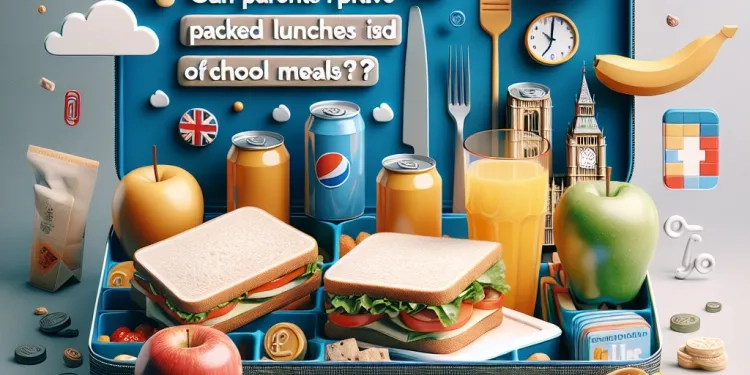
Find Help
More Items From Ergsy search
-

Can parents provide packed lunches instead of school meals?
Relevance: 100%
-

Calls for Better School Lunch Standards After Nationwide Survey
Relevance: 54%
-
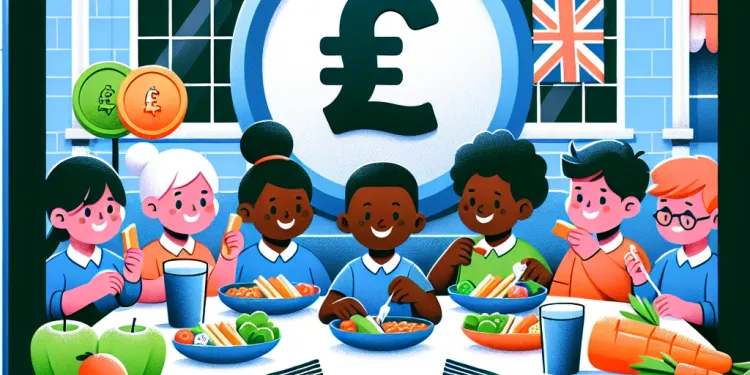
How can parents provide feedback on school meals?
Relevance: 53%
-
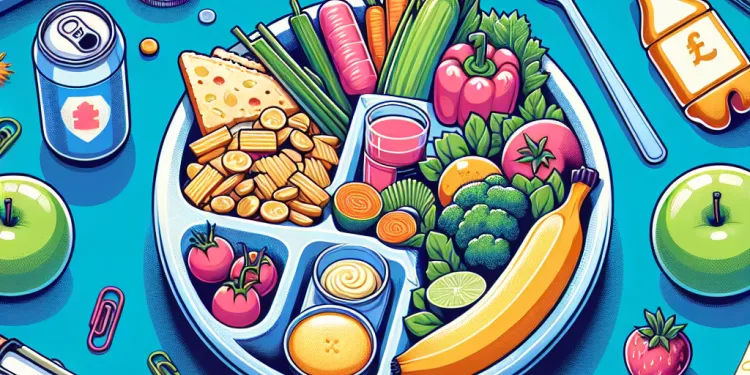
How are school meals provided in the UK?
Relevance: 52%
-

Are vegetarian or vegan options available in UK school meals?
Relevance: 50%
-

Who is responsible for providing school meals in the UK?
Relevance: 49%
-

What is the average cost of a school meal in the UK?
Relevance: 47%
-

How are special dietary requirements catered for in school meals?
Relevance: 45%
-

Are school meals inspected for quality and standards?
Relevance: 45%
-

What criteria must be met for a child to be eligible for free school meals?
Relevance: 43%
-

Who provides the funding for free school meals in the UK?
Relevance: 41%
-
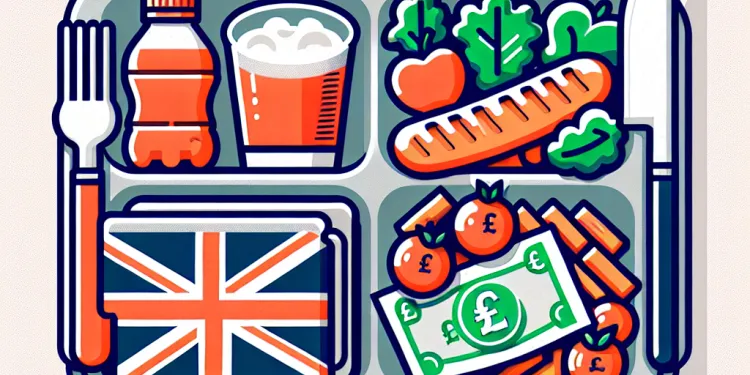
What is included in a typical school meal in the UK?
Relevance: 40%
-

What time are meals served?
Relevance: 40%
-

What is the purpose of providing school meals in the UK?
Relevance: 40%
-

Are school meals free for all students in the UK?
Relevance: 40%
-
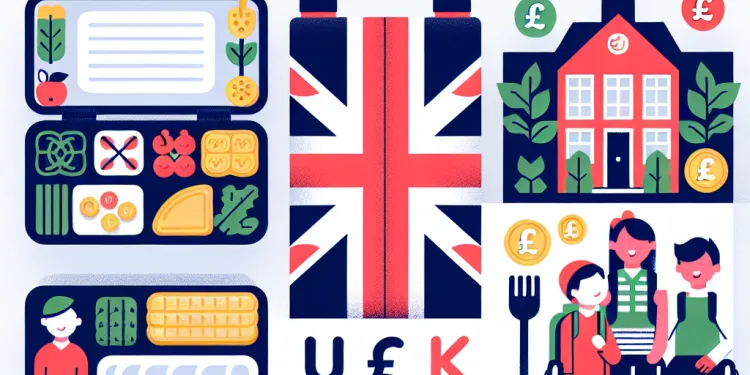
Can children with disabilities access school meals?
Relevance: 40%
-
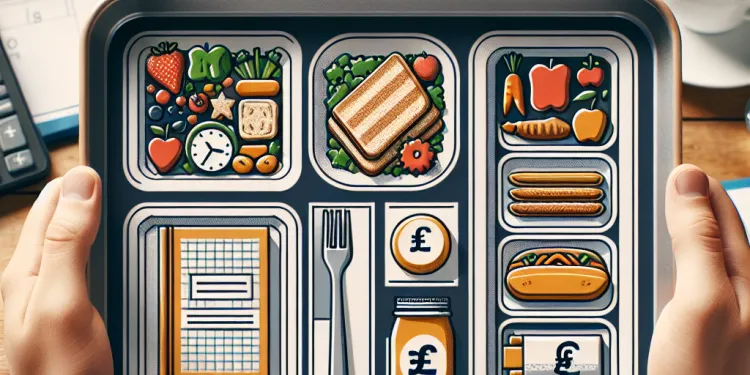
Are there educational components to the school meal program?
Relevance: 39%
-

What measures are taken to ensure food safety in school meals?
Relevance: 37%
-

How are food allergies managed in UK schools?
Relevance: 34%
-

Is there a focus on healthy eating in UK school meals?
Relevance: 30%
-
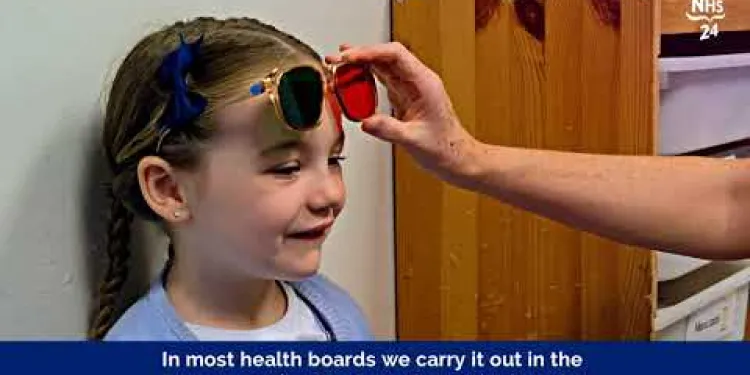
See4School
Relevance: 27%
-

Are there any initiatives to reduce food waste in schools?
Relevance: 26%
-

How are parents involved in the SEND process?
Relevance: 26%
-

Exercise Routines for Busy Parents
Relevance: 25%
-

Is it okay to use ice packs or cold showers to cool down?
Relevance: 24%
-

What role do schools play in managing concussions?
Relevance: 23%
-

What support is available for SEND children in schools?
Relevance: 23%
-

What is the SENCO's role in a school?
Relevance: 22%
-

Understanding Parental Rights in Light of New UK Child Protection Legislation
Relevance: 22%
-

Are there specific laws governing SEND in schools?
Relevance: 21%
-

How can schools create an inclusive environment for SEND children?
Relevance: 21%
-

Do SEND children attend mainstream schools?
Relevance: 21%
-

Calls to Ban Vapes Near School Grounds Gain Momentum
Relevance: 21%
-

How are school meal providers selected?
Relevance: 20%
-

Upcoming Changes to Parental Leave Policies in the UK
Relevance: 20%
-

Navigating the Changes to Parental Leave Regulations
Relevance: 20%
-

Navigating Legal Guardianship and Parental Responsibility in the UK
Relevance: 19%
-
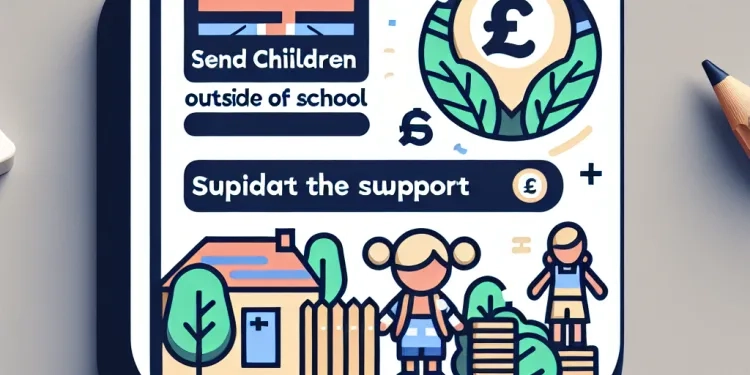
What support is available outside of school for SEND children?
Relevance: 19%
-

What is the role of parental monitoring in children's screen time and sleep?
Relevance: 18%
-

How can parents advocate for their SEND child?
Relevance: 18%
Introduction
In recent years, the debate over whether parents should provide packed lunches instead of relying on school-provided meals has gained attention. This topic centers on various factors including nutritional value, cost, convenience, and dietary preferences. Parents in the UK are increasingly considering the benefits and challenges associated with preparing packed lunches for their children.
Nutritional Considerations
Packed lunches offer parents full control over their children’s nutritional intake. Many parents view this as an advantage because they can tailor the contents according to their child’s specific dietary needs, preferences, and restrictions. This is particularly beneficial for children who may have allergies or intolerances to certain foods that might be present in standard school meals. Furthermore, by selecting fresh ingredients, parents can ensure their child receives a balanced diet rich in vitamins and minerals.
Cost Implications
From a financial standpoint, packed lunches can be both more economical and more expensive, depending on the choices parents make. While buying ingredients in bulk and preparing meals at home can save money over time, the initial cost of stocking up on healthy snacks and high-quality produce may be higher than the daily cost of school meals. Nevertheless, for some families, the opportunity to save money in the long run is a significant factor in their decision to provide packed lunches.
Convenience and Time Management
One of the primary challenges of providing packed lunches is the time commitment involved in preparation. Busy parents might find it difficult to allocate time each morning, or the night before, to prepare a balanced and appealing meal for their child. On the other hand, school meals offer a level of convenience that many families find appealing, as it eliminates the need to plan and prepare lunches regularly.
Cultural and Dietary Preferences
Packed lunches allow parents to accommodate their children’s cultural food preferences or dietary inclinations, which might not always be met by school menu options. This flexibility can contribute to a child’s comfort in their eating environment, potentially improving their overall food consumption and reducing food wastage. Additionally, some parents feel more confident knowing exactly what their child is eating each day.
Conclusion
The decision to provide packed lunches instead of utilizing school meal services is highly personal and varies based on each family’s circumstances, priorities, and resources. While packed lunches offer customization and potentially improved nutritional outcomes, they also require a time investment and, at times, greater upfront expense. Ultimately, each family must weigh these factors and decide what works best to ensure their child receives a balanced, enjoyable meal at school.
Introduction
Some people talk about whether parents should give kids packed lunches or let them eat school meals. This is a big topic because of nutrition, money, and what kids like to eat. In the UK, more parents are thinking about making lunches for their kids to take to school.
Nutritional Considerations
Packed lunches let parents decide what their kids eat. This can be good because they can make sure the food is right for the child's needs. This is important if a child is allergic to some foods. Parents can choose fresh and healthy foods with lots of vitamins and minerals for their kids.
Cost Implications
Packed lunches can be cheaper or more expensive. If parents buy food in big amounts and make lunches at home, it can save money. But buying lots of healthy snacks and good food might cost more at first than school meals. Some families might save money over time by making packed lunches.
Convenience and Time Management
Making packed lunches can take a lot of time. Busy parents might find it hard to make a good lunch every morning or night. School meals are easy because parents don’t have to make the lunch. Some families like this because it is less work.
Cultural and Dietary Preferences
Packed lunches let parents include foods from their culture or special foods their kids like. This is good if school meals don’t have those foods. Kids might eat better if they like the food. Parents also feel better because they know what their child eats at school.
Conclusion
Deciding between packed lunches and school meals is different for every family. Packed lunches let parents choose the food, which might be healthier. But they take time to make and can cost more at first. Families should think about these things to choose the best way to give their child good food at school.
Frequently Asked Questions
Can parents provide packed lunches instead of school meals?
Yes, most schools allow parents to provide packed lunches for their children instead of having school meals.
Are there any guidelines for what can be included in a packed lunch?
Many schools provide guidelines to ensure packed lunches are nutritious, often recommending a balance of proteins, carbohydrates, fruits, and vegetables.
Do schools have restrictions on certain foods in packed lunches?
Some schools may have restrictions, such as not allowing nuts due to allergies or limiting sugary snacks and drinks.
How can I ensure my child's packed lunch stays fresh until lunchtime?
Using an insulated lunch box, ice packs, and airtight containers can help keep food fresh.
What are the benefits of providing a packed lunch for my child?
Packed lunches allow parents to cater to their child's dietary preferences, allergies, and nutritional needs.
Are there any cost differences between packed lunches and school meals?
Packed lunches can be more cost-effective, but this depends on the ingredients used and local school meal pricing.
Can packed lunches accommodate special dietary needs?
Yes, packed lunches can be tailored to meet any special dietary restrictions, such as gluten-free or vegetarian diets.
What should I include in a balanced packed lunch?
A balanced packed lunch should include a portion of protein, whole grains, fruits, and vegetables, and a healthy drink.
Can packed lunches include desserts or treats?
Yes, but it's best to keep these in moderation and choose healthier options like fruit or yogurt.
What should I do if my child prefers school meals over packed lunches?
It's important to discuss with your child and perhaps opt for a combination if both options are available.
How do I know if the school provides a refrigerator to store packed lunches?
Check with the school directly, as policies and facilities vary.
Are there environmental benefits to packed lunches?
Yes, using reusable containers and cutlery reduces waste compared to disposable packaging from school meals.
How can I make packed lunches exciting for my child?
Variety is key. Try different combinations of proteins, wraps, salads, and include a surprise note or treat.
What is a common mistake to avoid when planning packed lunches?
Avoiding overly processed foods and lacking variety in the daily meal plan are common issues. Balance and variety are important.
Do schools have policies about sharing packed lunches?
Many schools discourage sharing lunches to prevent allergy risks and ensure food safety.
How can I manage time efficiently when preparing packed lunches?
Preparing components in advance, such as chopping veggies or cooking proteins the night before, can save time in the morning.
Can packed lunches help with picky eating habits?
Yes, involving children in planning and preparation can encourage them to try new foods and be less picky.
Is it necessary to label packed lunches?
Labeling can be helpful, especially in schools with many students or if there are food allergies.
Do I need to inform the school if I switch from school meals to packed lunches?
It's a good idea to let the school know for record purposes, especially if they track meal participation.
How can I find inspiration for packed lunch ideas?
There are many resources online, including blogs, parenting websites, and social media, devoted to creative and healthy lunch ideas.
Can parents give packed lunches instead of school meals?
Yes, parents can send a packed lunch with their child to school instead of having a school meal. This lets parents choose the food for their child.
It can be helpful to pack healthy foods like fruits, vegetables, sandwiches, and water. Parents can ask a teacher for more tips about healthy lunches.
Yes, most schools let parents pack a lunch for their kids to bring instead of eating school food.
What food can I put in a school lunchbox?
Here are some ideas for a healthy lunch:
- Sandwich or Wrap: Use whole grain bread or wraps. You can put things like cheese, ham, or chicken in it.
- Fruits and Vegetables: Add things like apple slices, carrot sticks, or grapes.
- Snacks: Try yogurt, crackers, or a small cake.
- Drink: Pack water or milk to drink.
If you need help, you can:
- Ask a grown-up for ideas.
- Look for lunchbox tips online.
Schools often give advice on how to pack healthy lunches. They suggest putting in a mix of proteins, carbohydrates, fruits, and vegetables.
Can you take any food to school in your lunchbox?
Some schools say you can't bring certain foods. Check with your school to know what you can pack. If you're not sure, ask a teacher or a parent for help. They can help you decide what to pack.
Some schools have rules. They might say "no nuts" because some people are allergic. They might also want children to bring less sugary snacks and drinks.
How can I keep my child's lunch fresh until lunchtime?
Here are some easy ways to keep lunch fresh:
- Use an insulated lunch box. It keeps food cool.
- Put a small ice pack in the lunch box. It stops food from getting warm.
- Keep fruit and veggies in plastic containers or bags. This keeps them fresh.
- Make sandwiches in the morning. Fresh ones taste better.
You can set reminders on a phone or tablet to pack lunch in the morning.
You can keep food fresh with a lunch box that keeps heat out, ice packs to keep it cool, and containers that close tight.
Why is it good to give my child a packed lunch?
Giving your child a packed lunch can be really helpful! Here are some reasons why:
- Healthy Choices: You can pick healthy foods like fruits and veggies.
- Favourites: You can include foods your child loves to eat.
- Save Money: Packed lunches can cost less than buying food.
- Special Diets: You can make sure the food fits any diet needs, like gluten-free.
You can use colorful lunch boxes or containers to make lunch fun! Also, adding notes or stickers can make your child feel special and happy.
Packed lunches help parents choose the right food for their kids. Parents can pick food that their child likes, is safe for them to eat, and is healthy.
Do packed lunches and school meals cost the same?
Do you want to know if packed lunches from home or meals from school have different prices? Here is some simple advice:
- Look at the price of packed lunches. Check how much the food you pack costs.
- Find out the cost of school meals. Ask your school or look on their website.
- Make a list to compare the prices. Write down what each one costs.
- Talk to an adult. They can help you understand better.
Packed lunches can be cheaper, but it depends on what you put in them and how much school meals cost.
Can packed lunches meet special food needs?
Yes, they can! Packed lunches can be made to fit what you need to eat. Here are some tips:
- Ask what foods you can or cannot eat. Make a list.
- Use labels to check ingredients and make safe choices.
- Try simple recipes that use the foods you can eat.
- Use picture cards to help pick safe foods.
Getting help from a grown-up is a great idea!
Yes, you can make packed lunches to fit special food needs, like not eating gluten or only eating vegetables.
What should I put in a balanced packed lunch?
A good lunch box should have some protein (like chicken or beans), whole grains (like bread or rice), fruits, vegetables, and a healthy drink.
Can I put desserts or treats in packed lunches?
Yes, you can add desserts or treats to packed lunches!
Here are some ideas:
- Add a small piece of chocolate.
- Put in a cookie or a small cake.
- Pack some fruit like apples or a banana for a sweet treat.
If you need help with reading, you can ask someone to read with you. There are also apps that read text out loud for you.
Yes, you can have them, but don't eat too many. Try to pick healthier snacks like fruit or yogurt.
What if my child likes school meals more than packed lunches?
If your child likes school meals more than packed lunches, here is what you can do:
- Talk to your child. Ask why they like school meals better. Listen to what they say.
- Look at the school menu. See what meals they offer. Maybe try cooking similar meals at home.
- Ask other parents what their kids like to eat at school.
- If you want, let your child have school meals sometimes. It’s okay to mix it up.
Support tools:
- You can use a picture chart to plan meals together with your child.
- Ask the school if they have a list of all the meals they serve. This way, you can talk about the options with your child.
- Keep the conversation open and fun, so your child feels involved.
It's good to talk with your child. You can choose a mix of both if you have two choices.
How can I find out if the school has a fridge for my lunch?
If you want to know if your school has a fridge for lunches, you can:
- Ask your teacher.
- Talk to the school office.
- Check the school website.
These can help you find out easily!
Ask the school to find out, because each school may do things differently.
Are packed lunches good for the environment?
Making your own lunch at home can be good for the planet. Here are some ways you can help:
- Use a lunch box: This can reduce waste from plastic bags.
- Bring a reusable water bottle: Save on plastic from single-use bottles.
- Pack food in small containers: Less plastic wrap and foil means less trash.
These tips make your lunch better for the Earth!
Yes, using containers and cutlery that you can use again helps make less waste than using throw-away packaging from school meals.
How can I make my child's lunch fun?
Here are some easy ideas to make lunch fun:
- Use colorful boxes or bags.
- Cut sandwiches into fun shapes.
- Add a surprise note or drawing.
- Include different foods like fruit, cheese, or crackers.
- Let your child help pack their lunch.
Your child will enjoy these lunches! You can try new things each day.
Change things up! Use different kinds of meat, bread, and veggies. Add a fun note or a little treat.
What mistake should you not make when making packed lunches?
Here is a simple tip to help you:
- Make sure to include healthy foods.
- Try to pack fruits and vegetables.
- Avoid packing too many sweets or unhealthy snacks.
Try using pictures of foods to help plan your lunch. This can make it easier to choose healthy items.
It's important to eat different kinds of food every day. Try not to eat too many foods that are made in factories. Eating a mix of foods is good for you.
Do schools have rules about sharing lunch?
Schools might have rules about sharing food. This can help keep everyone safe. Some kids have allergies, which means some foods can make them sick. You can ask your teacher if you are allowed to share your lunch.
When reading, you can:
- Ask someone to help you read.
- Use a finger or a ruler to follow the words.
- Look at pictures to understand better.
Schools often ask kids not to share their lunches. This is to keep everyone safe because some kids are allergic to certain foods.
How can I use time well when making packed lunches?
Here are some tips to help:
- Make a list: Write down what you need to pack.
- Plan early: Get things ready the night before.
- Use a timer: Set a timer so you don't spend too long.
- Simple tools help: Use easy tools like sandwich cutters.
Remember, practice makes it easier!
Getting things ready the night before can help you save time in the morning. You can chop vegetables or cook meat ahead of time.
Can packed lunches help with fussy eating?
Some kids are fussy when eating. A packed lunch lets you pick foods they like. This can help them eat better. You can try giving them new foods little by little. Make the lunch fun with colorful snacks. You can cut sandwiches into fun shapes. Try asking your child to help pack their lunch. This can make them excited to eat it.
Using pictures or apps can make it easier to choose different foods. You can also use timers to help manage eating times.
Yes, when kids help with planning and cooking, they might try new foods and not be so picky.
Do you need to put names on lunchboxes?
Labels can help. They are good in schools with lots of children. They help if someone is allergic to certain foods.
Should I tell the school if I change from school meals to packed lunches?
If you stop having school meals and start bringing food from home, you should let the school know.
Tell the teacher or write a note to the school.
You can ask an adult to help you tell the school.
It's a good idea to tell the school so they can keep a record, especially if they keep track of who eats meals.
How can I get ideas for packed lunches?
There are many places on the internet where you can find ideas for tasty and healthy lunches. You can look at blogs, parenting websites, and social media for help.
Useful Links
- Ergsy carfully checks the information in the videos we provide here.
- Videos shown by Youtube after a video has completed, have NOT been reviewed by ERGSY.
- To view, click the arrow in centre of video.
- Most of the videos you find here will have subtitles and/or closed captions available.
- You may need to turn these on, and choose your preferred language.
- Go to the video you'd like to watch.
- If closed captions (CC) are available, settings will be visible on the bottom right of the video player.
- To turn on Captions, click settings .
- To turn off Captions, click settings again.
More Items From Ergsy search
-

Can parents provide packed lunches instead of school meals?
Relevance: 100%
-

Calls for Better School Lunch Standards After Nationwide Survey
Relevance: 54%
-

How can parents provide feedback on school meals?
Relevance: 53%
-

How are school meals provided in the UK?
Relevance: 52%
-

Are vegetarian or vegan options available in UK school meals?
Relevance: 50%
-

Who is responsible for providing school meals in the UK?
Relevance: 49%
-

What is the average cost of a school meal in the UK?
Relevance: 47%
-

How are special dietary requirements catered for in school meals?
Relevance: 45%
-

Are school meals inspected for quality and standards?
Relevance: 45%
-

What criteria must be met for a child to be eligible for free school meals?
Relevance: 43%
-

Who provides the funding for free school meals in the UK?
Relevance: 41%
-

What is included in a typical school meal in the UK?
Relevance: 40%
-

What time are meals served?
Relevance: 40%
-

What is the purpose of providing school meals in the UK?
Relevance: 40%
-

Are school meals free for all students in the UK?
Relevance: 40%
-

Can children with disabilities access school meals?
Relevance: 40%
-

Are there educational components to the school meal program?
Relevance: 39%
-

What measures are taken to ensure food safety in school meals?
Relevance: 37%
-

How are food allergies managed in UK schools?
Relevance: 34%
-

Is there a focus on healthy eating in UK school meals?
Relevance: 30%
-

See4School
Relevance: 27%
-

Are there any initiatives to reduce food waste in schools?
Relevance: 26%
-

How are parents involved in the SEND process?
Relevance: 26%
-

Exercise Routines for Busy Parents
Relevance: 25%
-

Is it okay to use ice packs or cold showers to cool down?
Relevance: 24%
-

What role do schools play in managing concussions?
Relevance: 23%
-

What support is available for SEND children in schools?
Relevance: 23%
-

What is the SENCO's role in a school?
Relevance: 22%
-

Understanding Parental Rights in Light of New UK Child Protection Legislation
Relevance: 22%
-

Are there specific laws governing SEND in schools?
Relevance: 21%
-

How can schools create an inclusive environment for SEND children?
Relevance: 21%
-

Do SEND children attend mainstream schools?
Relevance: 21%
-

Calls to Ban Vapes Near School Grounds Gain Momentum
Relevance: 21%
-

How are school meal providers selected?
Relevance: 20%
-

Upcoming Changes to Parental Leave Policies in the UK
Relevance: 20%
-

Navigating the Changes to Parental Leave Regulations
Relevance: 20%
-

Navigating Legal Guardianship and Parental Responsibility in the UK
Relevance: 19%
-

What support is available outside of school for SEND children?
Relevance: 19%
-

What is the role of parental monitoring in children's screen time and sleep?
Relevance: 18%
-

How can parents advocate for their SEND child?
Relevance: 18%